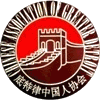People of Chinese ancestry have formed communities in Western countries throughout the world. These communities provide psychological and physical protection for members and promote community cohesion.
Old immigrant families typically view themselves as sojourners, traveling to America to accumulate wealth for eventual return to China. They socialize primarily with other Chinese, call home regularly, and visit relatives in China whenever possible.
Culture
Chinese people have a rich and diverse culture. Their beliefs, traditions and values are rooted in ancient China. They practice various religions including Buddhism, Confucianism and Taoism, as well as folk religion.
Many Chinese people are members of a local community where they celebrate their cultural and religious holidays. These celebrations may vary according to an individual’s religion, heritage and identity.
Chinese communities are based in large cities. They are often grouped together in ethnic neighborhoods called “Chinatowns.” They also live in rural towns, college-college towns and other smaller towns throughout the United States. These communities are centered around family, clan, and district associations as well as ethnic businesses. They are also governed by a Chinese Consolidated Benevolent Association. They have a strong sense of identity and pride in their heritage.
Education
Traditional Chinese culture attaches great value to education as a means of inculcating values and teaching needed skills. However, the emphasis on rapid economic development as an overriding national goal after the late 1970s put pressure on educational resources and favored technical studies.
In 1985 state quotas for university places were established, allowing both students sponsored by institutions and self-supporting students to pay their own expenses. Since 1978 large numbers of Chinese students have been studying in the United States, a trend that accelerated after normalization of US-China relations.
In 1986 the nine-year compulsory education law was introduced. People’s congresses at different levels were authorized to determine steps, methods, and deadlines for achieving universal education in accordance with local conditions. In addition, alternative forms of higher education were developed. These included spare-time and part-time universities for staff and workers, radio and television universities, and correspondence schools.
Employment
Chinese communities are diverse, and their members work in a wide variety of fields. Many work in traditional fields like agriculture, commerce, and industry, but also work in more modern occupations such as medicine and education.
Early Chinese immigrants to the United States worked in railroad construction, mining, and agriculture. They developed Chinatowns in cities, and opened retail businesses such as laundries and restaurants. As racial hostility increased, they retreated into ethnic business sectors to avoid competition with Caucasian Americans.
Today, Chinese communities are scattered around the globe. Some maintain cultural traditions by maintaining Chinatowns in large American cities, while others integrate with the local community through language schools and cultural festivals. They also serve as a source of economic development for China. These developments are especially important as the global economy becomes increasingly competitive and diversified.
Religion
Many Chinese people engage in beliefs and rituals from multiple religious traditions. In addition, it is common for Chinese to combine Western religious beliefs with traditional Chinese practices like ancestor worship and temple offerings. Chinese surveys rarely ask respondents about these activities and thus do not report on their prevalence. But CFR research and other studies suggest that combinations are quite common.
Determining how many Chinese are religious is difficult. This is largely because Chinese surveys do not use the wording in Western languages that most respondents understand as referring to formal, organized religions.
In addition, the CCP views religion as a threat to socialism and discourages its members from engaging in religious activities. (For more on this topic, see a CFR Backgrounder.) This makes it challenging for independent researchers to assess religion in China.
Language
The term Chinese community refers to people who trace their or their family’s origins to China. It includes those who identify as Chinese alone or in combination with other races and Asians.
In America, the Chinese community formed a close-knit, inward-looking group shaped by its history of discrimination and their awareness of their distinctive cultural identity. They were a highly insular community that often lived with three generations under the same roof.
Chinese is a monosyllabic language with very little inflection. It is also tonal, with each word having a distinctive relative pitch or “guffaw.” Spoken Chinese consists of several regional varieties, known as dialects. The most widely spoken is standard Mandarin. These dialects are not mutually intelligible, much like the languages of the Romance family, which English belongs to.
